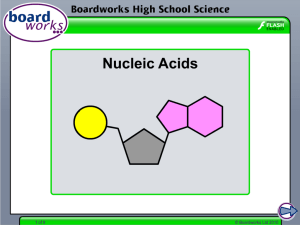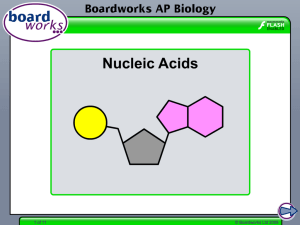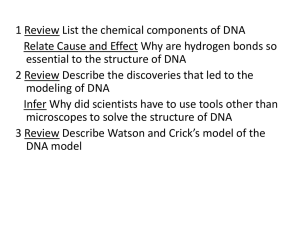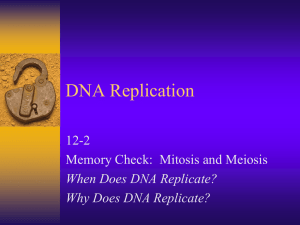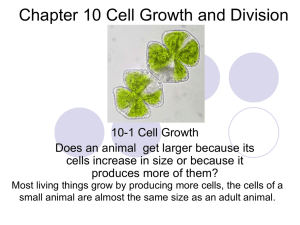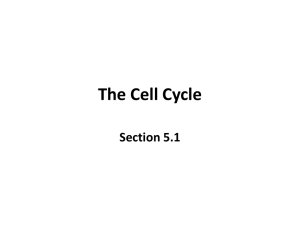PowerPoint
advertisement
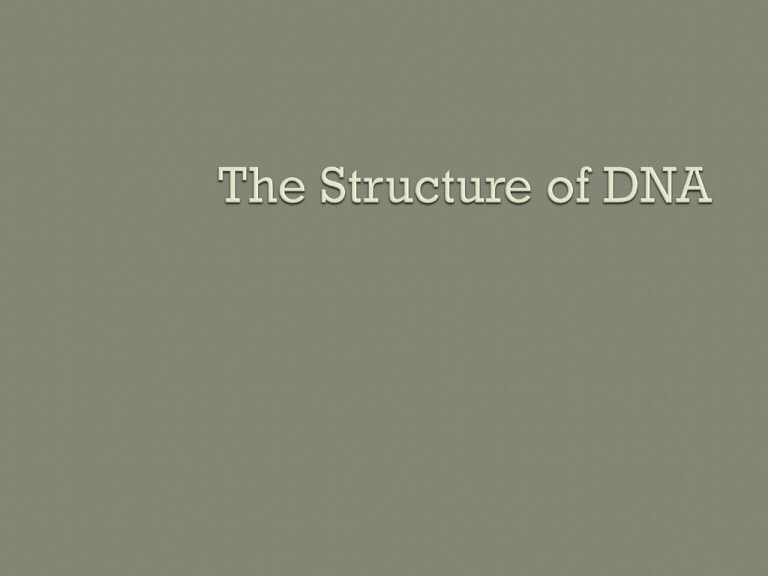
The subunit of DNA is called the _nucleotide__. • What are the 3 components of this subunit called? 3 Components: • Deoxyribose sugar • Nitrogen base • Phosphate 5 different types in genetic material: • Adenine – Purine– 2 rings, 2 bonds • Guanine – Purine– 2 rings, 3 bonds • Cytosine – Pyrimidine– 1 ring, 3 bonds • Thymine – Pyrimidine– 1 ring, 2 bonds • Uracil (found only in RNA) A long sugarphosphate backbone with a sequence of bases sticking off is formed. This may go on for millions of nucleotides The sugar may be one of two kinds (shown without the pesky hydrogens) 5 1 4 3 2 With both DNA and RNA, • bases different from one nucleotide to the next • Gives nucleic acids the appearance of messages in some strange molecular language. DNA has deoxyribose sugar; RNA ribose sugar. DNA contains thymine; RNA contains uracil Watson and Crick are credited with putting all the pieces together (pun intended) and coming up with this structure. Each of the base pairs are nearly flat Watson and Crick proposed stacking them up like stairsteps, with 2 sugar-phosphate strands around the outside One complication: • The 2 strands wind in opposite directions • The sugars are “upside down” compared with those of the other strand The model clearly explains Chargaff’s observation that the number of T’s is equal to the number of A’s: T and A are always paired together! Chromatin – uncondensed DNA (normal form) 4.6 X 107 bp DNA = shortest human chromosome • 14,000 micrometers of DNA unpacked • 2 micrometers during mitosis • 7000 packing ratio Nucleosomes – DNA wrapped around proteins called “histones” Packing ratio of 6 16 of 8 © Boardworks Ltd 2010 DNA replication The discovery of DNA’s structure by Watson and Crick provided evidence that complementary base pairing was key to DNA’s ability to replicate. Scientists proposed that DNA “unzipped” as hydrogen bonds between base pairs were broken. New polynucleotide strands could then be synthesized using the originals as a template. Several hypotheses were proposed as to the specific mechanism by which new strands are created. 17 of 8 © Boardworks Ltd 2010 Mechanisms of DNA replication 18 of 8 © Boardworks Ltd 2010 Meselson–Stahl DNA experiment 19 of 8 © Boardworks Ltd 2010 DNA replication 20 of 8 © Boardworks Ltd 2010 DNA replication enzymes 21 of 8 © Boardworks Ltd 2010 DNA replication 22 of 8 © Boardworks Ltd 2010
